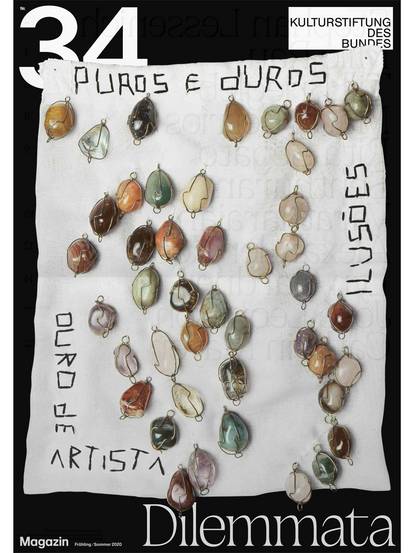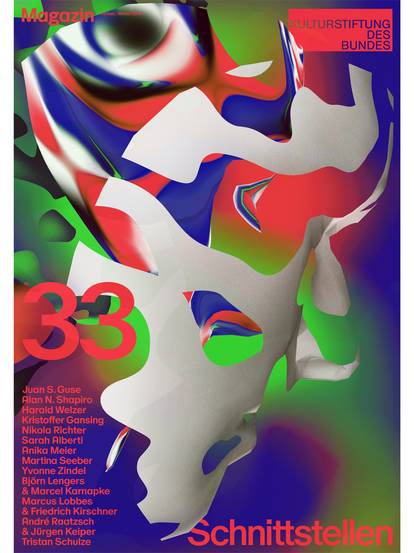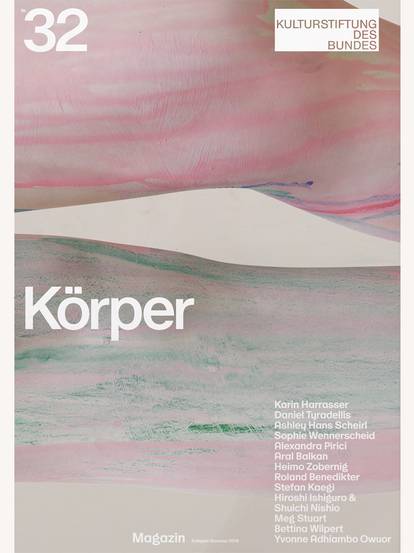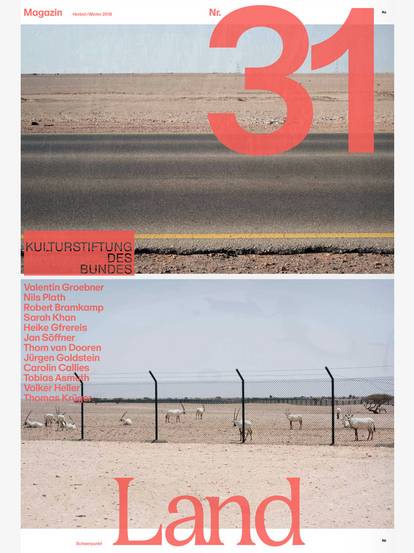If we have gained anything positive from the pandemic, then it is a new appreciation for perspectives and experiences that we had long taken for granted. We had no idea what we would miss and how desperately we would miss it. The small talk between guests and waiters at our favourite café, a live concert, sports, theatre performances, wandering through department stores, breaktime with colleagues at the office, the cafeteria feeling etc. The pandemic – if it were a testing arrangement – could double as a large-scale social experiment designed to identify thresholds of pain: How much social isolation can we withstand, how little togetherness is too little? In combination with extended home office work and home schooling, how close is too close, and how much distance is absolutely necessary? How have our views changed, how have the social requirements of cohabitation changed?
In German, we would usually say “Zusammenleben” – living together. But our preference for the Latin-derived term “Cohabitation” was not borne from a wish to add yet another foreign word to our pandemic glossary. Rather, cohabitation is the word the French use when a president and the parliamentary majority belong to different political camps. A peaceful and constructive relationship between those who hold divergent perspectives or convictions certainly presents a far greater challenge than simply “living together” among like-minded individuals.
Against this backdrop, the current issue of our magazine examines forms of cohabitation which have received little thought or (had previously) seemed hopeless. For example, can cohabitation between humans and nature (Jens Kersten / Tilo Wesche (opens in a new window)), or between natural and artificial intelligence (Catrin Misselhorn) function if we simply stop regarding the relationship as one of subjugation? Where do the living environments of humans and (wild) animals overlap in the city, and to what extent is it necessary to balance their respective interests (Sunaura Taylor)? Can we imagine the awareness of trees in the forest, and can their vegetative social system enable us to better comprehend possibilities of cohabitation (Sumana Roy (opens in a new window))? How can different cultures of remembrance not only coexist, but also engage with one another beyond a competition of victimhood? (Mirjam Zadoff (opens in a new window); Manuela Bauche (opens in a new window))
Contemplating the challenges and requirements of cohabitation in different areas ultimately leads to the same fundamental questions: Can we put ourselves into the others’ shoes so well that we can understand them, or that they feel understood? How do we know that we have achieved a change of perspective? With regard to cohabitation, the term “empathy” has seen a remarkable renaissance – especially in times of increasing divisions and ever-widening differences. While there have been calls for courtesy or respect in the past, people are now emphasising the need to empathise. Empathy is believed to facilitate a change of perspective and offer a better foundation for reconciling interests and fostering mutual appreciation. However, many representatives of minorities who would benefit from empathy from the majority society, have met expressions of empathy with scepticism or even discredited them as presumptuous, an attempt to put oneself into someone else’s shoes and thereby claim to understand their experiences and feelings. In the opening articles of this issue, the philosophers David Lauer (opens in a new window)and Christian Nyampeta try to bring some clarity into the debate. Interestingly, in response to the word “empathy”, both authors spontaneously and independently mentioned the 45th president of the United States as the embodiment of someone completely lacking empathy. Yet they do not go so far as to praise empathy as the moral panacea for a deeply divided society. Empathy is one of the oldest ideas and long-harboured desires of human history, but it is also a very complex matter.
We always try to redesign the photo spread of our magazine ever so slightly to surprise the reader a little. In this issue, the poster, normally enclosed inside, is the magazine cover. It depicts animals which may coexist in works of art, but certainly will never be found in natural cohabitation. We chose Theo Deutinger as the artist for our photo spread not only because of the topic and for his unique artistic approach. The Austrian architect and visual artist is participating in the exhibition Cohabitation (opens in a new window) at the silent green Kulturquartier in Berlin – an exhibition from which we drew inspiration for this issue. The exhibition was developed by Marion von Osten – a faithful companion of our foundation – who invited Theo Deutinger to participate. Sadly, Marion von Osten passed away before the exhibition could open. We miss her dearly. This issue is dedicated to her.

![[Translate to English:] Magazine 38](/fileadmin/_processed_/f/1/csm_Magazin38_Cover-Vorschau_921x1230_689f428dc3.jpg)
![[Translate to English:] Magazine 37](/fileadmin/_processed_/b/c/csm_Mag37_Cover-Vorschau_921x1230_b5129fdb2a.jpg)
![[Translate to English:] Magazine 36](/fileadmin/_processed_/2/a/csm_Cover_Magazin36__issuu_2f3cef97bb.jpg)





![[Translate to English:] Magazine 30](/fileadmin/_processed_/c/b/csm_magazin30_vorschau_9005f773d3.jpg)














